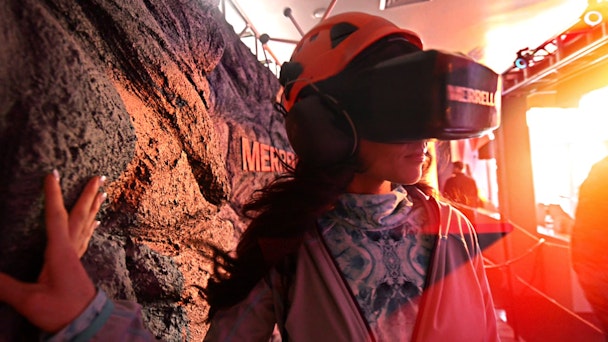Wake up, virtual reality is so much more than tech
Virtual reality is the shiny new tech that’s set to dominate the marketing debate in 2016. But currently many advertiser-led VR projects are falling short. In the scramble to be associated with the latest seductive trend, it’s easy to overlook the fact that a decent campaign requires so much more than decent tech.

As suggested by the speedy selling-out of consumer versions of the Samsung Gear headset, it is set to get even bigger next year. This uptake encourages advertisers to see VR as a new gadget or an innovative new tech device. But it’s neither. It is, in fact, an entirely new medium that will be every bit as transformative as the smartphone in the mid-2000s, but only if we can master its unique storytelling demands.
As a completely new medium, VR has completely new parameters. The biggest current limitation is a disconnect between what’s seen and what’s felt. The great big paradox is that environments feel so real that users expect natural interaction; like talking to characters, reaching out and touching. But, at this embryonic stage, that’s not yet possible.
The best way to conquer the unfamiliar challenges is by rigorously understanding the elements that make up a good experience. And part of this understanding lies in appreciating the fact that it takes so much more than top-notch tech to transform a execution from gimmick into effective campaign. It takes a large dose immersive storytelling skill and a deep understanding of how this emerging medium works, both in terms of engagement and build.
Best practice should always be to start prototyping with the headset on at the earliest possible opportunity. This is invaluable to mapping out foundations and environments to get a deeper sense of the narrative as it plays out. It’s here that most challenges will be encountered.
This process helps creatives, developers, storytellers and UX leads play with the key elements of scale, depth-of-field, focal point positioning, mood and atmosphere. Pivotal ingredients are usability, storytelling and design aesthetics. They should combine to create a powerful emotional connection between virtual experiences and consumers.
As a completely new medium, best practice is still being defined. But we already know that narrative is a crucial element. There’s a fine balance between amazing users with a beautifully designed VR environment, and guiding their progress through a narrative journey. This is why continual testing and refinement are so vital.
Virtual reality is advancing at an incredible pace. New headsets, peripherals and techniques are constantly coming into the mainstream. It’s a pioneering time that leaves us facing a steep learning curve. But one already firmly established truth is that relevant and purposeful experiences require a compelling emotional consumer connection. The most effective way to create this emotional tie is by shifting focus from branding to experience.
The award-winning Merrell Trailscape VR experience, for example, really got people speaking. But they didn’t talk about what they saw or what they did; they waxed lyrical about how it made them feel. It’s this direct emotional connection that sets good, well-designed immersive campaigns apart from poorly conceived ones.
To capitalise on the longevity that comes with emotional resonance, we need to discard the usual processes of design and VFX production. We need to be humble enough to learn all over again. We need to be prepared to try new methods, fail fast and push the boundaries of what’s possible. Only then can we deal with the unique UX challenges, balancing the desire for exploration with the need to move forward through a narrative.
VR virgins experience a ‘wow factor’ that can be truly mind-blowing. But this alone does not make for an effective marketing strategy and poorly thought-through campaigns will give it a bad rep before it’s even left the starting blocks. A new medium lives or dies by the strength of its initial content.
In the rush to embrace VR, it’s easy to forget that technology is just the invisible magic that makes it happen, not the end in itself. Yes, technology has finally caught up with the dream. But now the content needs to live up to the technology.
After all, it’s not the technology that turns VR into an utterly unforgettable experience; it’s skillful storytelling. And it’s only by striving to improve this part of the process that we will truly be able to realise this nascent medium’s full potential as a marketing channel.
Resh Sidhu is creative director of Framestore’s VR Studio & formerly creative director at AKQA

